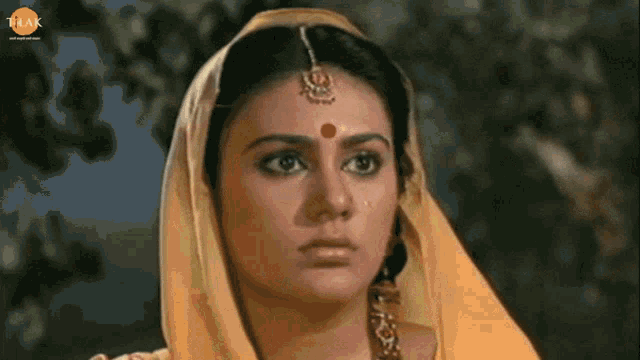What type of social mentality does Rabindranath Tagore present in the poem Deeno Daan?
Said the royal attendant, “Despite entreaties, king,
The finest hermit, best among men, refuses shelter
In your temple of gold,
Sparing not a glance for the palace of gold,
Thronging to where a flower in a devout heart
Spreads heaven’s incense. On the bejewelled platform
The god sits alone in the empty temple.”
In the poem 'Deeno Daan', Rabindranath Tagore criticizes a materialistic mindset. He contrasts the focus on wealth, like golden palaces and rich temples, with true devotion, which is found in a sincere heart. Tagore suggests that people wrongly believe God is found in luxury, but real spirituality lies in simple, heartfelt devotion, not in material riches.
“There is no god in that temple,” said the hermit. Here, we can see that Tagore though in implied manner criticized the people as well for having the blind faith in the such kind of lavish temples and and materiality behind them. Sometimes such temples also used to manipulate the masses, often to gain political advancement.
The king said, “No god! You speak like a godless man,
Hermit. A bejewelled idol on a bejewelled throne,
You say it’s empty?”
The king in return does not able to understand the gravity of question that why hermit has said that there is no God in king's temple. The King naively asserts that hermit is godless man , someone who has no belief in God. Here, king is unable to see beyond the material construct of things, and he proudly says that God is there on bejewelled throne. In return hermit accused that the king is filled with arrogance, and his royal throne also has filled with pride and not with the spiritual presence of God. Further king says he made this colosol temple with twenty lakh gold coins
Said the tranquil hermit, “The year when the fires
Raged and rendered twenty thousand subjects
Homeless, destitute; when they came to your door
With futile pleas for help, and sheltered in the woods,
In caves, in the shade of trees, in dilapidated temples,
When you constructed your gold-encrusted building
With twenty lakh gold coins for a deity, god said,
‘My eternal home is lit with countless lamps
In the blue, infinite sky; its everlasting foundations
Are truth, peace, compassion, love. This feeble miser
Who could not give homes to his homeless subjects
Expects to give me one!’ At that moment god left
To join the poor in their shelter beneath the trees.
In these lines, the Hermit reveals the King’s neglect when people came to him for help after a fire in the village. The King ignored their pleas and didn’t help them. The Hermit emphasizes that true worship of God is shown by helping the poor and needy. He argues that a grand temple holds no value if it can’t shelter those in need. According to the Hermit, helping others is the highest form of worship, and by failing to do so, the King is committing a sin against God, not just as a ruler, but as a human being.
Even today, there are many incidents where temples and other non-living things are considered more important than people. Large temples are built, and for that, many people have to give up their land and homes. If they refuse, the government forces them. The same thing happened with the construction of the Ram Mandir in Ayodhya.
In the poem "Deeno Daan", Rabindranath Tagore talks about the tension between wealth and moral responsibility. The Hermit criticizes the King for spending a lot of money on building a grand temple while ignoring the poor and homeless, especially during difficult times. This is similar to what is happening with the Ram Mandir construction. Many people, like Ram Kishor and the Madhukar family, lost their homes and livelihoods because of the temple project, which led to destruction and displacement. (Scroll.in)
Neglect of the Poor and Displacement: Just as the King ignored the homeless in the poem, the development projects for the Ram Mandir, such as road widening and land acquisition, have led to the displacement of thousands of families in Ayodhya. These residents, often poor, like Ram Kishor and the Yadav families, have lost their homes and livelihood, with little or no compensation, much like the subjects in the poem who were left homeless after the fire.
Lavish Spending vs. Human Welfare: In "Deeno Daan", the King spends lavishly on building a golden temple while ignoring the suffering of his people. Similarly, the Ram Mandir project has been accompanied by massive spending on infrastructure, including roads and luxury businesses, while local residents like farmers and traders suffer from the loss of their homes, livelihoods, and land.
Moral Critique of Leadership: The Hermit criticizes the King for his lack of compassion and responsibility, highlighting the moral failure of leadership that prioritizes grand monuments over the welfare of the people. This is reflected in the discontent of the people of Ayodhya, who blame local officials for ignoring their needs and failing to provide fair compensation while the focus remains on the temple's grandeur and political significance.
While critiquing the temples, we also should acknowledge of good things done by many temples. There are such temple which provides free food and water for many poor people, and many shelters are also being made for such peoples by temple authorities. Moreover, there are certain financial help is also given to poor students as well. And many temples also runs schools and hostels in which they provide everything to the students free or in minimal chargers.
Thank You...








